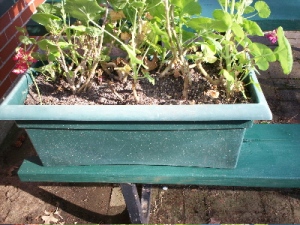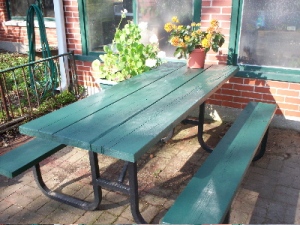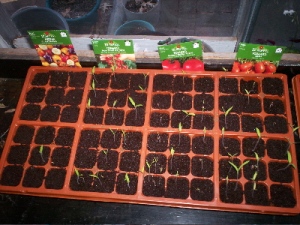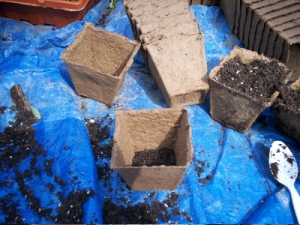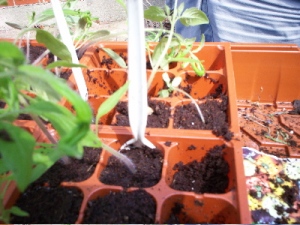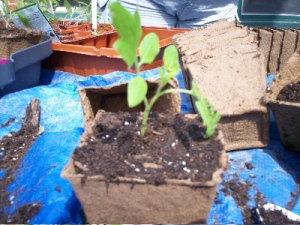My laundry room had linoleum over 12″ square hard floor tiles that were glued to the concrete floor. I know this because in various parts of this 8’x10′ laundry room I could see all of these three flooring surfaces. And, the linoleum was pretty badly worn where it still existed.
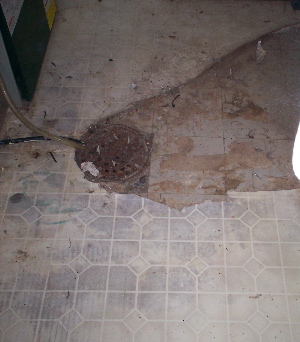
A few months ago a friend of mine gave me 10 boxes of 8×8 tiles – enough to tile this laundry room. It took me a while to get to it, but I did it!
Here’s the “How To” section – or at least the “How I Did It” section:
First off, pull up all the old flooring. I used a pry bar and that worked pretty well for the hard tiles underneath. I used a box cutter to cut manageable pieces of the linoleum so that I could pull them up and throw them away easily. The black stuff in the photo below is the old glue – but trust me, it was on there solid, so there was no taking it off.
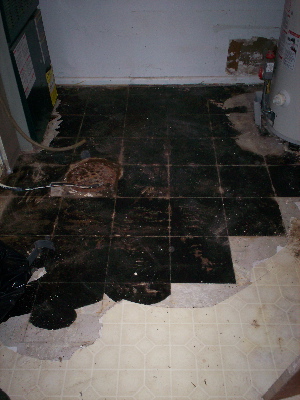
Generally one would pull up the baseboards, but the baseboards in this room appear to have been liquid nailed to the wall – so I left the baseboards on (because I really had no desire to re-drywall this room.)
Then sweep and clean the floor surface well. I used a shop vac to get all the tiny pieces out of the corners – and everywhere else.
Items you will need:
- tile
- tile spacers (1/8″ are used for vertical surfaces, for horizontal surfaces it appears to be a personal choice. I used 1/4″)
- notched trowel
- thin-set mortar
- a thick piece of wood or a heavy duty spoon or other type of tool for heavy stirring
- 2- large buckets (one for mixing the thinset and one for mixing the grout) I used an old cat litter bucket I got for free off of Craig’s List and one I got for a few bucks at the box home improvement store.
- tile cutter – can be rented at the box home improvement store – or borrowed from a friend as I did.
- grout (sanded is used for spaces larger than 1/8″) – make sure you take a tile with you when you pick this out – there were roughly 25 colors from which to choose when I decided.
- a grout float (which evidently is a type of trowel)
- large sponge (or two)
- bucket for cleaning out sponge in water
- grout sealer
- knee pads, or several thick towels – most of this work is done on your knees.
- For those over 40 – Advil or other pain reliever (trust me, you’ll need it) and perhaps a heating pad.
I called on a friend, Ed, who had tiled a number of times in his past. In previous posts I have referred to him as the “toilet guy.” Actually, Ed is your basic Renaissance Man – someone who can do almost everything – cook, tile, plumbing work, electrical work, sew, etc. (in addition to being an incredible friend.) Anyway, when I told him I was going to tile, he asked if I would like some help. Not being an idiot, I said “yes.”
Before Ed arrived I did a dry set. Basically, I lined up the tiles in both directions with the spacers to see if we would need to do any cutting of tiles. I discovered that from left to right (in the photo) no cutting would be required (yea!), but from top to bottom, we would need to cut half tiles for the back wall (which will eventually be covered up with my laundry sorter) giving me a full tile just inside the door.
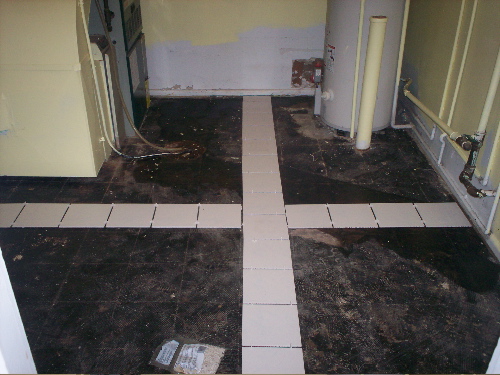
Mixing the thin-set was difficult the first time because we did exactly as the instructions suggested – put the water in then put all the mix in, then stir. Much of the powder got stuck to the bottom of the container and I had to take a yard tool with a long handle to scrape the bottom of the bucket and stir with. The next time we made thin-set I put the water in, and then a little of the thin-set and mixed and added more of the powder mix and stirred and added the rest and stirred. This worked out much better.
The rest of the directions on the bag of thin-set were very clear and helpful, and included illustrations in larger type for easy reference.
Bless Ed’s heart, he tiled when I had to leave and help my 100 year old friend who had fallen, and a good chunk of the work was done by the time I got back.
The basics for placing your tiles: Put your trowel into the thin-set and place thin-set on floor. Spread thinset over the entire area for each tile, then using the notched section of the trowel, scrape over the thin-set leaving some areas higher than the other, then place the tile. Insert the spacers and push into place. The tiles can be easily moved for quite some time if slight adjustments need to be made.
The dark area in the middle of the floor is the drain (which needs to be cleaned well and painted.) And, yes, I can see from this photo that I have some touch up painting still to do.
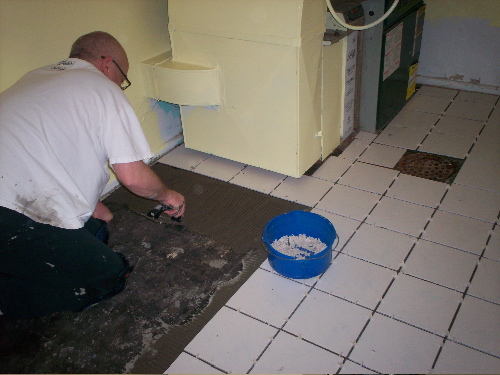
Cutting the tile was not as easy as one would think. BUY MORE TILE THAN YOU THINK YOU NEED! If there is any cutting to be done you will probably have tiles that don’t cut as you would like and that you can’t use. Remember when measuring for placing tiles that you need to reduce the cut by the grout on both sides.
As we were nearing the end of placing the tiles, we almost ran out of the thin-set. I grabbed a rubber spatula and scrapped the side of the bucket. That worked very well. It cleaned up with no problem when we were done.
Now is the time you will want to take the Advil and grab the heating pad. There is a reason that nothing can be done on the floor for the next 24-48 hours… the person doing the tiling is recouping. I spent the next 24 hours with a icy hot patch on my back, Ed went to the gym and walked or ran several miles on the treadmill. By the following day we were both in much better shape (obviously he was in the better shape.)

After 24+ hours, remove the spacers. First I started to individually remove these – but after about 10 I thought “there has got to be an easier way.” And there was! I took a broom and started sweeping the spacers into a pile. Not all of them moved, but at the end I only needed to remove another 20 by hand, the rest of the 600-700 spacers swept up easily. I put them in a plastic bag to reuse for my next tiling project.
After I removed the spacers, I went in and wiped off the dried thin-set on the tiles with a sponge. It doesn’t matter how careful you are, the tiles will probably get dirty as they are placed. No worry, the thin-set wiped off very easily.
The next part of the project is the grouting.
Mix the grout in a bucket as specified on the bag… except, add the powdered grout a little at a time to the water so it all gets mixed well and with less effort.
Take the float, load it with grout and push into the spaced area at a 45 degree angle. The directions on the bag of grout were very easy to understand and included step by step illustrations. Follow these. They include wiping off the excess grout gently after about 20 minutes, then waiting 2 hours and wiping off the film on the tiles (I did this twice.)
Take more pain reliever.
Wait a day or two.
Apply sealer to the grout – twice.
Take more pain reliever.
Move all the items from your laundry room out of the room or rooms in which you have been storing them (for me that means my washing machine is no longer in the middle of my kitchen, and the various storage tubs of items I took out of the folding table/storage unit are no longer under my kitchen table, and the 3x6x4 folding table/storage unit that I built several years ago is out of the hall leading to my sun room.)
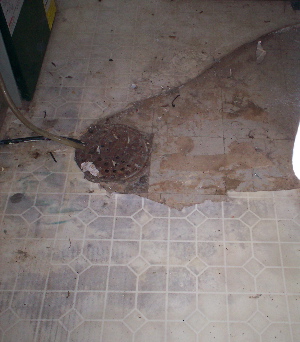 Before
Before
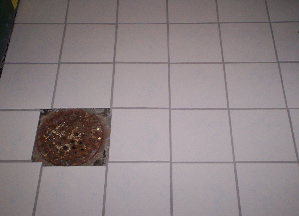 After
After
Read Full Post »
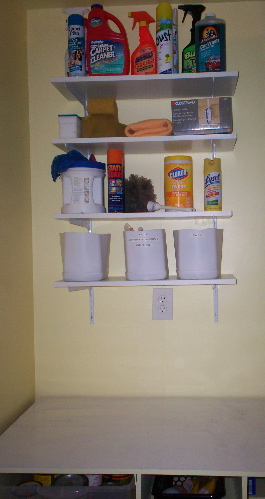
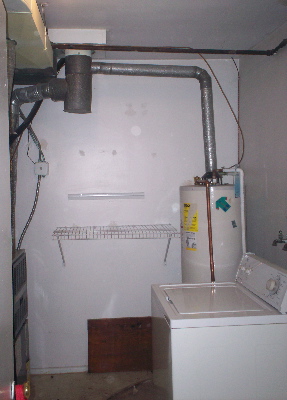
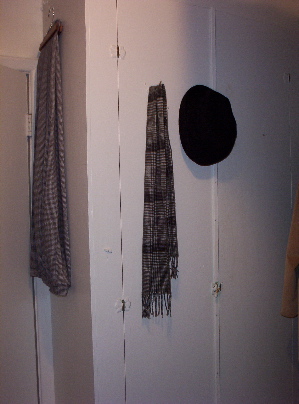



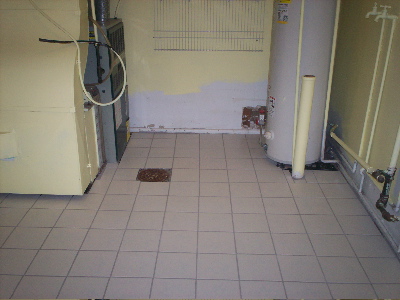
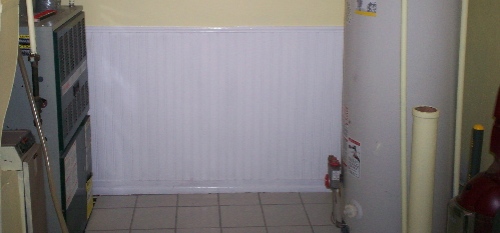

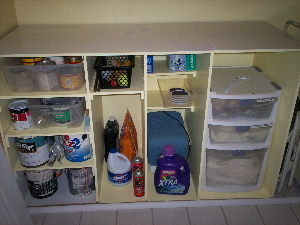






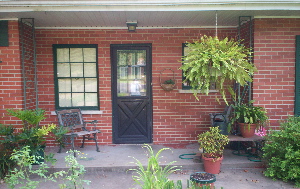

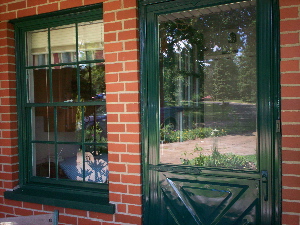
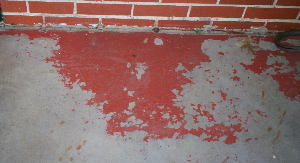
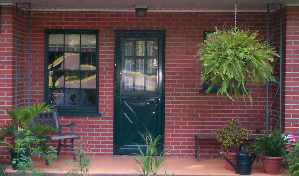

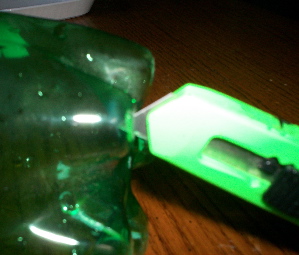
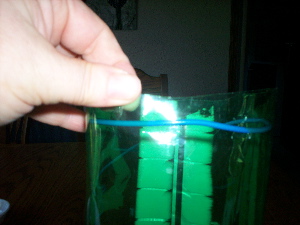

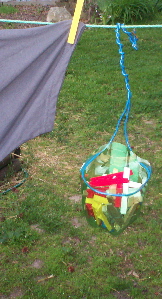
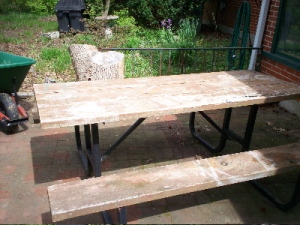

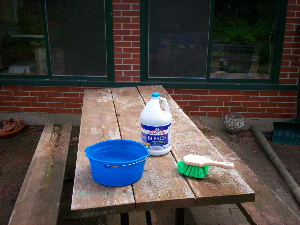
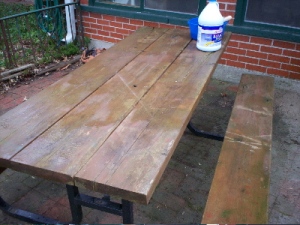
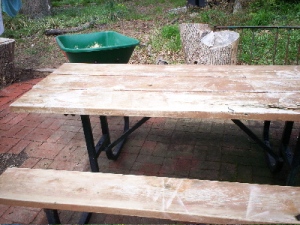

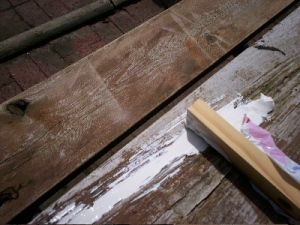

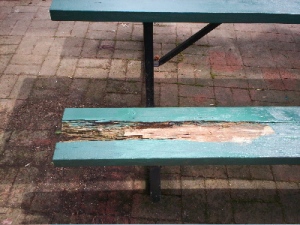 I painted the damaged part as best I could, then covered it with a planter.
I painted the damaged part as best I could, then covered it with a planter.